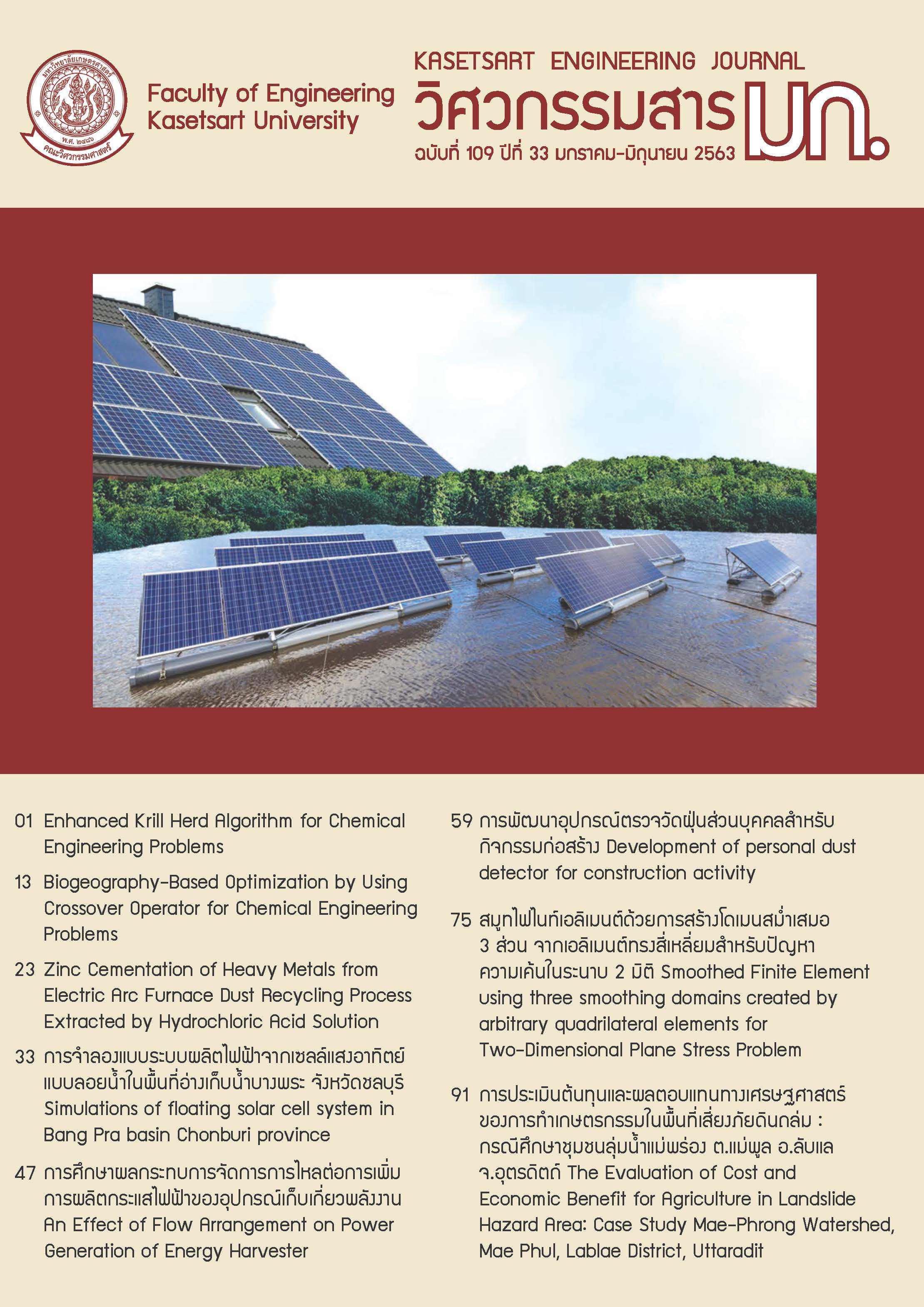An Effect of Flow Arrangement on Power Generation of Energy Harvester
Keywords:
flow-induced vibration, energy harvesting, piezoelectric material, wind energy, wind tunnelAbstract
This paper investigates the effect of flow arrangement on the electrical output of a newly designed energy harvesting device. The device consists of a stationary upstream cylinder and a downstream tip body. Electric power is produced when an upstream cylinder cause a flow-induced vibration to its downstream structure that would on turn collide with an object resulting in a continuous vibration. A piezoelectric transducer patch, installed at the collided object, can thus convert vibration energy to electrical energy. In this study, an experiment was carried out in a low turbulence intensity wind turbine at a flow range of 10,240 to 17,613 Reynolds number by varying the ratio between the distance between upstream cylinder to downstream tip body and the diameter of the upstream cylinder (L/D). Based on the results obtained, it was found that vibration had an instantaneous influence on the rate increase of the collided object’s vibrating amplitude at an (L/D) ratio of 2.5. Furthermore, the results also showed that the root mean square electrical output power was increasing as Reynolds number was increased and a maximum electrical power output of 1,427.75 microwatts was obtained at L/D ratio of 2.5.
References
Bryant M. and Garcia E. (2011). Modeling and Testing of a Novel Aeroelastic Flutter Energy Harvester. Journal of Vibration and Acoustics, 133(1): 011010.
Allen J. J. and Smits A. J. (2001). Energy harvesting eel. Journal of Fluids and Structures, 15: 629-640.
Assi G.R.S. (2014). Wake-induced vibration of tandem cylinders of different diameters. Journal of Fluids and Structures, 50: 329-339.
Huera-Huarte F.J. and Gharib M. (2011). Vortex- and wake-induced vibrations of a tandem arrangement of two flexible circular cylinders with far wake interference. Journal of Fluids and Structures, 27(5): 824-828.
Matsumoto M., et al. (2006). Fundamental Study on the Efficiency of Power Generation System by Use of the Flutter Instability. In: Proceedings of the ASME 2006 Pressure Vessels and Piping/ICPVT-11 Conference, Vancouver, BC, Canada, pp. 277-286.
Igarashi T. (1981). Characteristics of the Flow around Two Circular Cylinders Arranged in Tandem: 1st Report. Bulletin of JSME, 24(188): 323-331.
Abdelkefi A., et al. (2014). Incident flow effects on the performance of piezoelectric energy harvesters from galloping vibrations. Theoretical and Applied Mechanics Letters, 4 (2): 022002.
Uttayopas P. and Kittichaikarn C. (2019). Effects of Downstream Structures on Aero Elastic Energy Harvesters From Wake-Induced Vibration. Journal of Fluids Engineering, 141(7): 071103.


